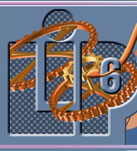Every Macao user should have their Solaris/UNIX and
X11 environments configured so they can start Macao conveniently and use
it effectively.
User.setup
The user.setup program begins by installing the directory user.Macfiles
in your home directory. This directory will appear as a Macintosh AppleDouble
volume, and provides a place to store your Macintosh files, fonts, and
preferences.
In addition, it will install some X application default files in your
home directory. These files are called Mwm, and Latitude.
- Warning:
- If you move the user's home directory, you must use the program user.setup again.
|
Installing these files onto your system
- Log into your user account.
- Enter this command:
% $LATITUDE_ROOT/bin/user.setup
- Follow the installation instructions on your screen.
- Modify your start-up files.
Once the installation script has finished running, you should modify
some of your start-up files to make Macao easy to use. For example, if
you are a C shell user, you should make sure the CW Latitude executables
are in your path by adding a line such as the following to your .cshrc
file:
set path = ( $path $LATITUDE_ROOT/bin )
Configuring Your System
To configure your system, first set the environment variable to locate
resource files. Finally, set the environment variable
LD_liBRARY_PATH to locate shared libraries. Do this by following
the instructions below, as appropriate.
Macao allows you to customize your application's preferences through
Mwm, and CW Latitude X-application default files. You will be able to
alter your program resources (for example, background color, window title)
by modifying these files.
- Add the following line to your .login file:
setenv LD_liBRARY_PATH $MOTIFROOT/lib:/usr/lib
The LD_liBRARY_PATH variable is used by the shared library
linker to determine which directories to look for shared libraries.
The MOTIFROOT variable is the root of your Motif installation.
- Verify your changes.
- Log out, then log in again to make these changes take effect.
|









